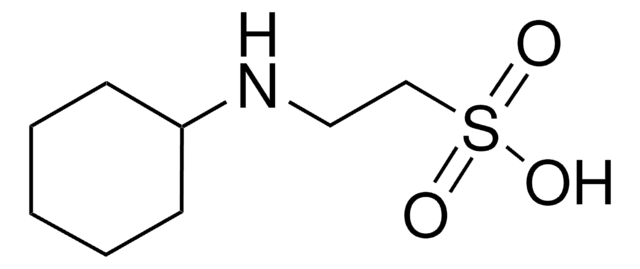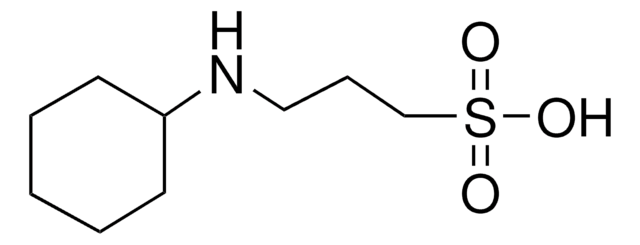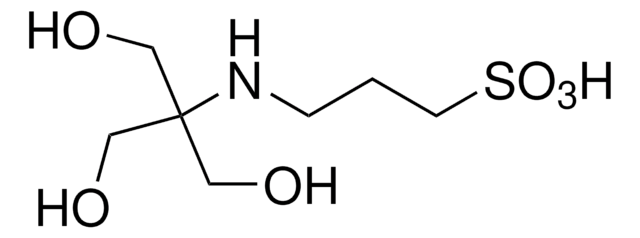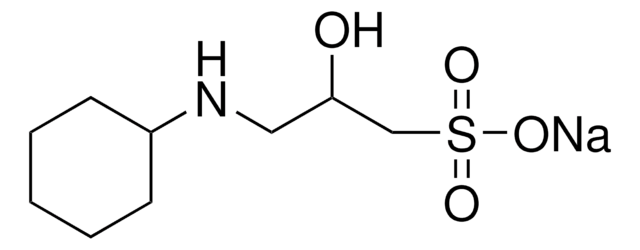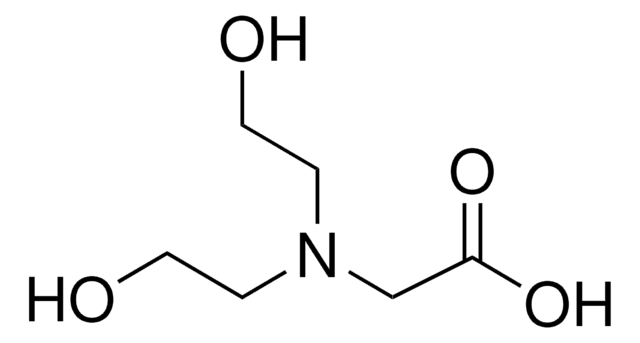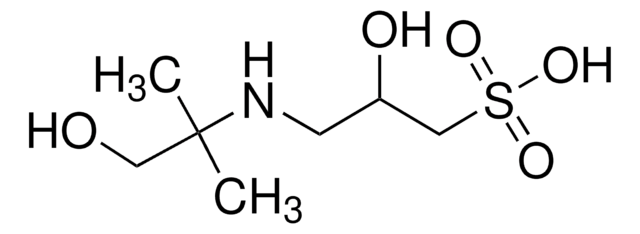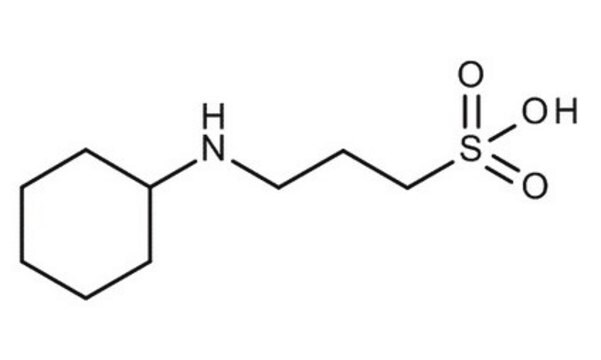C2278
CAPSO
≥99% anhydrous basis (titration)
Synonyme(s) :
3-(Cyclohexylamino)-2-hydroxy-1-propanesulfonic acid, CAPSO Free Acid
About This Item
Produits recommandés
Niveau de qualité
Essai
≥99% anhydrous basis (titration)
Forme
crystalline powder
pH
2.5-4.0
Plage de pH utile
8.9-10.3
pKa (25 °C)
9.6
Solubilité
water: 0.111 g/mL, clear, colorless
Application(s)
diagnostic assay manufacturing
Chaîne SMILES
OC(CNC1CCCCC1)CS(O)(=O)=O
InChI
1S/C9H19NO4S/c11-9(7-15(12,13)14)6-10-8-4-2-1-3-5-8/h8-11H,1-7H2,(H,12,13,14)
Clé InChI
INEWUCPYEUEQTN-UHFFFAOYSA-N
Vous recherchez des produits similaires ? Visite Guide de comparaison des produits
Catégories apparentées
Description générale
Application
- To maintain pH 9 during water leach test for the analysis of high-carbon coal fly ash-soil mixtures.
- Chemiluminescent in situ hybridization using soybean peroxidase-labeled peptide nucleic acid (PNA) probes. I
- Preparation of planar bilayer lipid membranes.
Code de la classe de stockage
11 - Combustible Solids
Classe de danger pour l'eau (WGK)
WGK 3
Point d'éclair (°F)
Not applicable
Point d'éclair (°C)
Not applicable
Équipement de protection individuelle
Eyeshields, Gloves, type N95 (US)
Faites votre choix parmi les versions les plus récentes :
Déjà en possession de ce produit ?
Retrouvez la documentation relative aux produits que vous avez récemment achetés dans la Bibliothèque de documents.
Les clients ont également consulté
Notre équipe de scientifiques dispose d'une expérience dans tous les secteurs de la recherche, notamment en sciences de la vie, science des matériaux, synthèse chimique, chromatographie, analyse et dans de nombreux autres domaines..
Contacter notre Service technique